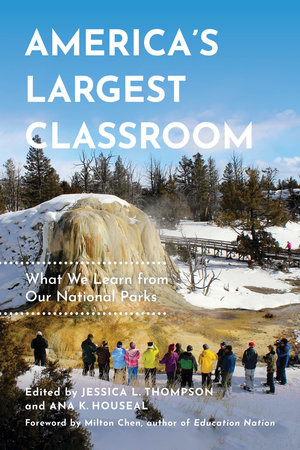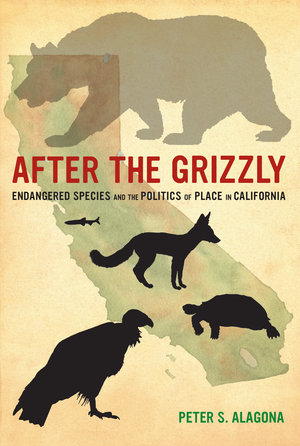Happy Earth Day 2020! This year, celebrating the outdoors and our planetary biosphere is more important than ever before. Even as California’s landscape is regularly glassed, COVID-19 is offering a glimpse at what a future ecotopia could consist of. And if a week marked by oil prices inverting into negative values demonstrates anything, it is that we are still capable of being taken unawares by trends in our energy consumption.
It is with this spirit that UC Press looks to Earth Day 2020. We hope to cast our vision for a more daring and just environmental future in with the scholarship and research that will make that vision a reality.
So even if we are unable to be present in the natural world like most Earth Days, we hope that this small selection of UC Press titles will engender your connection to the environment regardless.
Handbook of Citizen Science in Ecology and Conservation
edited by Christopher A. Lepczyk, Owen D. Boyle, and Timothy L. V. Vargo
“I can hardly imagine initiating a citizen-science project without first reading this book!”
—from the foreword by Reed F. Noss, President, Florida Institute for Conservation Science
Handbook of Citizen Science in Ecology and Conservation is the first practical and comprehensive manual for creating, implementing, or improving natural science research and monitoring projects that involve collaboration between scientists and the general public. As citizen science projects become increasingly common, project leaders are seeking information on concrete best practices for planning and implementing projects—practices that allow them to guide and gauge success while also ensuring the collection of high-quality data and rewarding experiences for volunteers. In this handbook, citizen science practitioners from around the world and with decades of experience provide step-by-step instructions, insights, and advice, and they explore real-world applications through case studies from a variety of citizen science projects. This is the definitive reference guide for anyone interested in starting or improving a citizen science project with ecological or conservation applications, from professors and graduate students to agency staff and nongovernmental organizations.
America’s Largest Classroom
What We Learn from Our National Parks
edited by Jessica L. Thompson and Ana K. Houseal
“America’s Largest Classrooms crisscrosses the landscape of education, offering important insights into place-based education, economics, and partnerships among seemingly unlikely actors, science, and history.”
—Victoria Gillis, Retired Endowed Chair of Adolescent Literacy Education at the University of Wyoming
Over the past 100 years, visitor learning at America’s national parks has grown and evolved. Today, there are over 400 National Park Service (NPS) sites, representing over eighty million acres. Sites exist in every US state and territory and are located on land, at sea, in remote areas, and in major urban centers. Every year, more than 300 million people visit national parks, and several million of them are children engaged in one of many educational programs hosted by the NPS.
America’s Largest Classrooms offers insight and practical advice for improving educational outreach at national parks as well as suggestions for classroom educators on how to meaningfully incorporate parks into their curricula. Via a wide collection of case studies—ranging from addressing inclusivity at parks and public lands to teaching about science and social issues—this book illustrates innovations and solutions that will be of interest to nature interpreters, outdoor educators, and policy makers, as well as professors in the sciences writ large.
Environmental Justice in a Moment of Danger
by Julie Sze
“Let this book immerse you in the many worlds of environmental justice.”
—Naomi Klein
We are living in a precarious environmental and political moment. In the United States and in the world, environmental injustices have manifested across racial and class divides in devastatingly disproportionate ways. What does this moment of danger mean for the environment and for justice? What can we learn from environmental justice struggles?
Environmental Justice in a Moment of Danger examines mobilizations and movements, from protests at Standing Rock to activism in Puerto Rico in the wake of Hurricane Maria. Environmental justice movements fight, survive, love, and create in the face of violence that challenges the conditions of life itself. Exploring dispossession, deregulation, privatization, and inequality, this book is the essential primer on environmental justice, packed with cautiously hopeful stories for the future.
After the Grizzly
Endangered Species and the Politics of Place in California
by Peter S. Alagona
“Alagona adroitly documents the roles that historical contingency and a few influential, passionate people can play in shaping the mixed fortunes of endangered species.”
—Science
Thoroughly researched and finely crafted, After the Grizzly traces the history of endangered species and habitat in California, from the time of the Gold Rush to the present. Peter S. Alagona shows how scientists and conservationists came to view the fates of endangered species as inextricable from ecological conditions and human activities in the places where those species lived.
Focusing on the stories of four high-profile endangered species—the California condor, desert tortoise, Delta smelt, and San Joaquin kit fox—Alagona offers an absorbing account of how Americans developed a political system capable of producing and sustaining debates in which imperiled species serve as proxies for broader conflicts about the politics of place. The challenge for conservationists in the twenty-first century, this book claims, will be to redefine habitat conservation beyond protected wildlands to build more diverse and sustainable landscapes.
The Mountains That Remade America
How Sierra Nevada Geology Impacts Modern Life
by Craig H. Jones
“This book details a remarkable example of the lived human history of a place and its intersection with the natural.”
—Environment, Space, Place
From ski towns to national parks, fresh fruit to environmental lawsuits, the Sierra Nevada has changed the way Americans live. Whether and where there was gold to be mined redefined land, mineral, and water laws. Where rain falls (and where it doesn’t) determines whose fruit grows on trees and whose appears on slot machines. All this emerges from the geology of the range and how it changed history, and in so doing, changed the country.
The Mountains That Remade America combines geology with history to show how the particular forces and conditions that created the Sierra Nevada have effected broad outcomes and influenced daily life in the United States in the past and how they continue to do so today. Drawing connections between events in historical geology and contemporary society, Craig H. Jones makes geological science accessible and shows the vast impact this mountain range has had on the American West.
Dark Green Religion
Nature Spirituality and the Planetary Future
by Bron Taylor
“This ambitious work seeks to set forth a new religious tradition characterized by its central concern for the fate of the planet.”
—Nova Religio: The Journal of Alternative and Emergent Religions
In this innovative and deeply felt work, Bron Taylor examines the evolution of “green religions” in North America and beyond: spiritual practices that hold nature as sacred and have in many cases replaced traditional religions. Tracing a wide range of groups—radical environmental activists, lifestyle-focused bioregionalists, surfers, new-agers involved in “ecopsychology,” and groups that hold scientific narratives as sacred—Taylor addresses a central theoretical question: How can environmentally oriented, spiritually motivated individuals and movements be understood as religious when many of them reject religious and supernatural worldviews? The “dark” of the title further expands this idea by emphasizing the depth of believers’ passion and also suggesting a potential shadow side: besides uplifting and inspiring, such religion might mislead, deceive, or in some cases precipitate violence. This book provides a fascinating global tour of the green religious phenomenon, enabling readers to evaluate its worldwide emergence and to assess its role in a critically important religious revolution.





